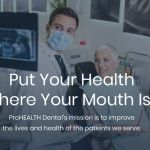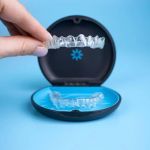What to Do If Your Teeth Don’t Align Properly
- 1. Understanding Teeth Alignment Issues
- 2. Causes of Misalignment in Teeth
- 3. Possible Solutions for Misaligned Teeth
- 4. Real-World Case Study: Correcting Misaligned Teeth
- 5. Pros and Cons of Different Treatment Options
- 6. How Dentistry Toothtruth Can Help
1. Understanding Teeth Alignment Issues
Teeth misalignment is a common problem that many people face. If your teeth don’t align properly, it can affect both your appearance and oral health. Misaligned teeth can lead to difficulty chewing, speech problems, and even jaw pain. In more severe cases, it may lead to tooth decay and gum disease due to the difficulty of cleaning your teeth effectively. The good news is that teeth misalignment is treatable with the right guidance and care. Let’s explore why teeth misalignment happens and the steps you can take to fix it.
2. Causes of Misalignment in Teeth
There are several factors that can lead to teeth misalignment, some of which are genetic, while others are environmental or behavioral. Some common causes include:
- Genetics: Your parents' dental history plays a major role in how your teeth develop. If they had crooked teeth, you may be more likely to experience similar issues.
- Thumb Sucking: Habitual thumb sucking during childhood can affect the development of the teeth and cause misalignment.
- Jaw Development Problems: If the jaw doesn’t develop properly, it can cause teeth to shift or grow in the wrong direction.
- Tooth Loss: Missing teeth can lead to shifting of surrounding teeth, causing misalignment over time.
Understanding the underlying causes of misaligned teeth is the first step in deciding the best treatment approach.
3. Possible Solutions for Misaligned Teeth
If you’re dealing with misaligned teeth, you’re not alone, and fortunately, there are various solutions available to help correct the issue. The treatment you choose will depend on the severity of the misalignment and your personal preferences. Here are a few common treatments:
- Braces: Traditional metal braces are one of the most common treatments for misaligned teeth. Braces work by gradually shifting your teeth into their correct positions over time.
- Clear Aligners: Clear aligners like Invisalign are a popular alternative to traditional braces. These are virtually invisible and removable, making them a more comfortable and discreet option.
- Retainers: After braces or clear aligners, retainers help to maintain the new alignment of your teeth and prevent them from shifting back.
- Surgery: In extreme cases, dental surgery may be necessary to fix misalignment issues caused by jaw problems.
Consulting with a dental professional will help you determine the most appropriate solution for your specific needs.
4. Real-World Case Study: Correcting Misaligned Teeth
Let’s look at the case of Sarah, a 32-year-old woman who had struggled with misaligned teeth her entire life. Sarah had a serious overbite and was self-conscious about her smile. After consulting with a dentist, she decided to go with Invisalign, a clear aligner system that was both comfortable and discreet. Over the course of 18 months, Sarah’s teeth gradually shifted into a perfect alignment. Today, she feels much more confident and enjoys her beautiful, aligned smile without the bulky appearance of traditional braces.
This real-world example demonstrates how effective modern treatments, like clear aligners, can be in correcting teeth misalignment, improving both appearance and confidence.
5. Pros and Cons of Different Treatment Options
When considering the best treatment for your misaligned teeth, it’s important to weigh the pros and cons of each option. Here’s a breakdown of the most common treatments:
- Braces:
- Pros: Effective for most types of misalignment, highly customizable, can correct severe problems.
- Cons: Noticeable, uncomfortable initially, requires regular adjustments.
- Clear Aligners:
- Pros: Discreet, removable, more comfortable than traditional braces.
- Cons: May not be suitable for severe misalignments, requires discipline to wear them consistently.
- Surgery:
- Pros: Permanent solution for severe misalignment, can correct jaw problems.
- Cons: Invasive, high cost, lengthy recovery time.
Each treatment option comes with its own set of advantages and limitations. It’s crucial to discuss with a dental professional to find the best solution for you.
6. How Dentistry Toothtruth Can Help
If you’re struggling with misaligned teeth, Dentistry Toothtruth can provide expert guidance and treatment options tailored to your needs. With a focus on innovative solutions like clear aligners and modern braces, we aim to help you achieve the smile you’ve always wanted. Our team of experienced professionals is here to help you every step of the way, from consultation to treatment and aftercare. For more information on how we can help you, visit Dentistry Toothtruth and take the first step toward a healthier, more confident smile.







 ProHEALTH Dental4.0 (506 review)
ProHEALTH Dental4.0 (506 review) Smooth Dental and Orthodontics4.0 (371 review)
Smooth Dental and Orthodontics4.0 (371 review) Morrone, Kaye and Yucha Orthodontics - Moorestown5.0 (387 review)
Morrone, Kaye and Yucha Orthodontics - Moorestown5.0 (387 review) Kanwar Gill, BDS0.0 (0 review)
Kanwar Gill, BDS0.0 (0 review) Sutton Children’s Dentistry and Orthodontics4.0 (249 review)
Sutton Children’s Dentistry and Orthodontics4.0 (249 review) Zhihao You, DDS, MS, PhD0.0 (0 review)
Zhihao You, DDS, MS, PhD0.0 (0 review) The Importance of Oral Health Education During Pregnancy for a Healthy Pregnancy
The Importance of Oral Health Education During Pregnancy for a Healthy Pregnancy Best Tips for Brushing Your Teeth Properly for Healthy Gums: Essential Techniques for Oral Health
Best Tips for Brushing Your Teeth Properly for Healthy Gums: Essential Techniques for Oral Health Why Skipping Dental Checkups Can Lead to Bigger Oral Health Problems
Why Skipping Dental Checkups Can Lead to Bigger Oral Health Problems Advantages of Porcelain Dental Restorations
Advantages of Porcelain Dental Restorations How Can Diabetes Cause Tooth and Gum Problems? Preventing and Managing Oral Health Issues
How Can Diabetes Cause Tooth and Gum Problems? Preventing and Managing Oral Health Issues Healthy Habits for Promoting Good Oral Health and Hygiene: Tips for a Healthy Smile
Healthy Habits for Promoting Good Oral Health and Hygiene: Tips for a Healthy Smile